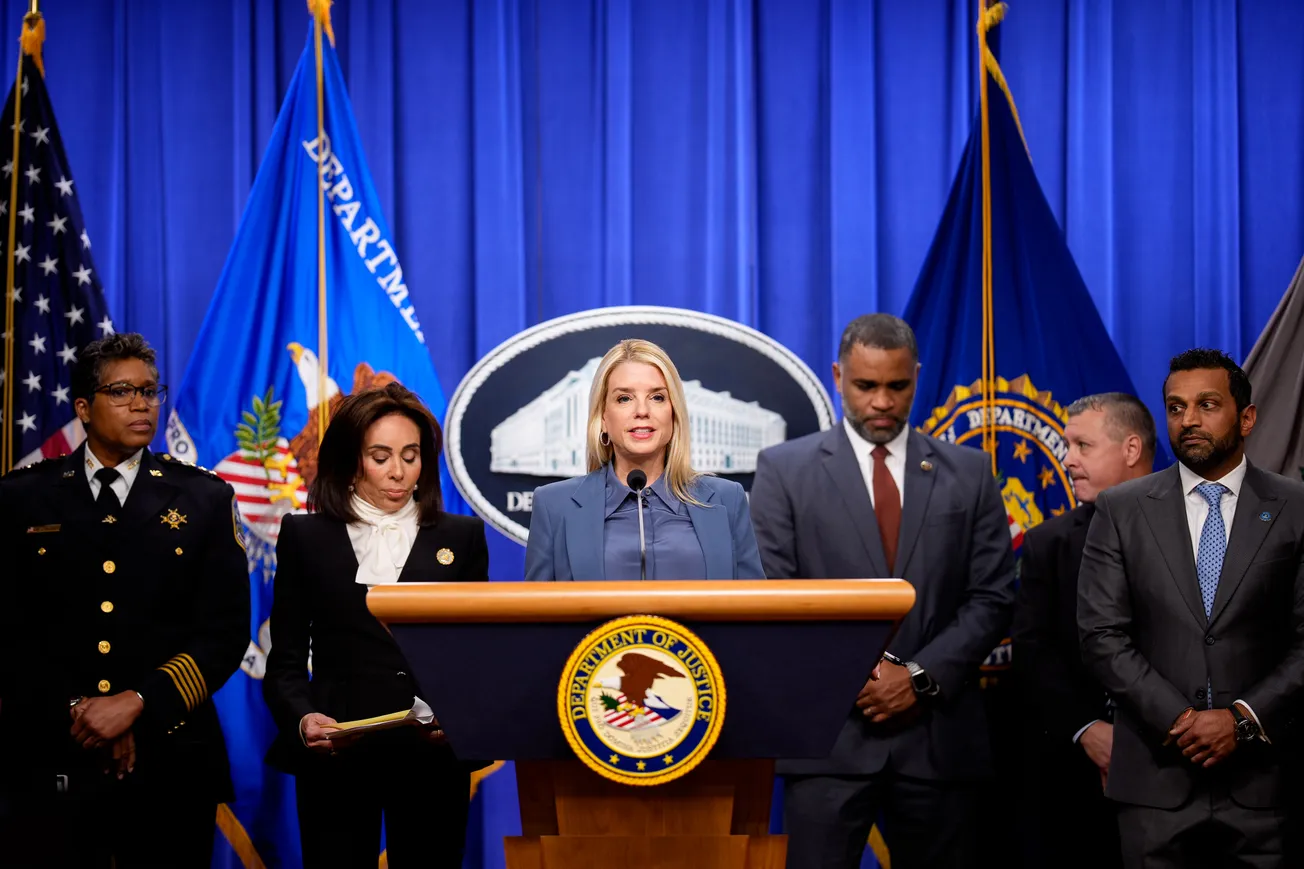When the Trump administration announces the next round of government layoffs, the wailing, the gnashing of teeth, the sob stories will be deafening. For what? A bunch of overpaid, underworked bureaucrats?
Estimates about how many jobs have been cut so far differ. The press claims DOGE has eliminated around 100,000 federal jobs. Challenger, Gray & Christmas says 62,530 were let go in January and February. But the Bureau of Labor Statistics recorded a net loss of only 6,700 federal jobs in February.
Whatever the case, Donald Trump wants big numbers. The Department of Education already said it will chop its workforce in half. Veterans Affairs says it is targeting 80,000 workers.
The White House is currently reviewing plans for a second wave of layoffs after getting recommendations from Cabinet officials.
Terrible, right?
Wrong. Consider the context missing from every one of these sky-is-falling stories:
This is just a haircut.
- There are 2.4 million federal workers, which means that eliminating even 200,000 is a tiny 8% trim. (Southwest Airlines recently announced a 15% cut in its workforce.)
- Under President Joe Biden, the non-military federal workforce grew by 140,000. DOGE hasn’t even managed to get the workforce back to where it was before Biden’s spending spree.
Job cuts of this magnitude aren’t unprecedented. Just the overheated coverage is.
- In Bill Clinton’s first term in office, he shed more than 330,000 federal workers. There were no protests and virtually no media coverage.
Federal workers are overpaid and overprotected.
- Nearly a third of federal workers are unionized, compared with less than 7% in the private sector. As a result, managers have found it almost impossible not only to fire workers but to give them anything less than perfect performance ratings. One Government Accountability Office report said that 99.5% of them got a “fully successful” rating or above. More than a third were given the highest rating of “outstanding.”
- The average salary for a federal worker now tops $100,000, and benefits average more than $40,000 a year. The Congressional Budget Office last year found that federal pay and benefits are 5% higher than the private sector.
- And, as anyone who has ever had to deal with a government worker knows, they are not as productive as their private-sector counterparts.
Layoffs are a fact of life.
- In the first two months of this year, private employers laid off nearly 160,000 workers. Last year, the tech industry alone shed 150,000 jobs.
- Several major companies have already announced layoff plans for the year, including Starbucks, Chevron, JPMorgan Chase, Kohl’s, Meta platforms, Southwest Airlines, and CNN.
The federal government has no choice.
- In just the first two months of this year, the federal government ran up $436 billion in deficits, on the way to what’s expected to be $1.9 trillion for fiscal year 2025, and interest payments on the national debt have topped $150 billion.
- No one in their right mind thinks this is sustainable, and no business faced with losses on this massive a scale would not be cutting deeply into its labor costs.
What matters isn’t who gets laid off, but who gets rehired.
- The economy has added a net of 276,000 jobs in the first two months of this year, according to the Bureau of Labor Statistics. The unemployment rate is unchanged, the average number of weeks unemployed is lower than it was in December.
- As the Office of Personnel Management correctly observed, “The way to greater American prosperity is encouraging people to move from lower productivity jobs in the public sector to higher productivity jobs in the private sector.”
The reason all this is such a shock to federal workers is that they assumed that their gravy train would go on forever. They don’t deserve anyone’s sympathy.
Issues & Insights was founded by seasoned journalists of the IBD Editorials page. Our mission is to provide timely, fact-based reporting and deeply informed analysis on the news of the day – without fear or favor.
Original article link
TIPP Takes
Geopolitics, Geoeconomics, And More
1. Macron Hosts Leaders For 'Coalition Of The Willing' Summit About Ukraine War - RFE/RL
Leaders from more than 30 countries are meeting in Paris for crucial discussions as part of a "coalition of the willing" to firm up support for Ukraine in case of a U.S.-negotiated cease-fire or peace deal to end the three-year war.

Hosted by French President Emmanuel Macron, European leaders, as well as representatives from Canada and Turkey, are meeting for talks on March 27 about the format of any future security guarantee they could offer Kyiv, but also to coordinate on current issues being discussed in the U.S.-led negotiations, including the contentious Russian demand to ease sanctions.
2. Proposed Black Sea Initiative Is A New Deal: Russia - Reuters
Russian Foreign Ministry spokeswoman Maria Zakharova said that the proposed Black Sea Initiative was a new deal, not an extension of an earlier agreement.
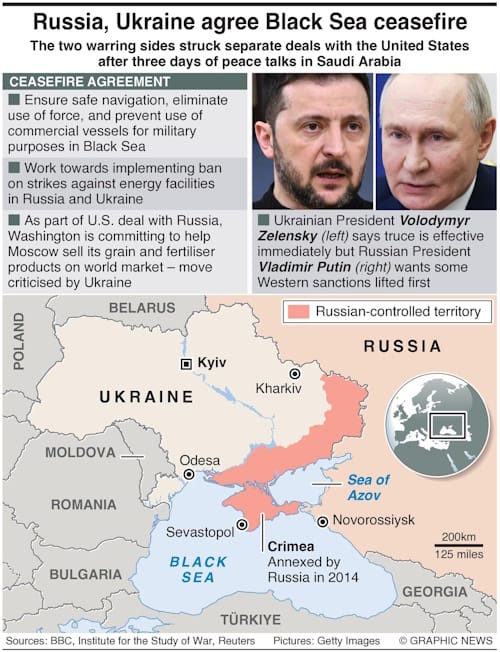
“This is a new agreement, the contours of which are currently being discussed,” Zakharova said when asked by Reuters if the proposed deal was an extension to an earlier memorandum of understanding under which UN officials agreed to help Russia get its food and fertilizer exports to foreign markets.
3. North Korea Has Sent Thousands More Troops And Weapons To Russia, Seoul Says - UPI
North Korea has sent an additional 3,000 soldiers along with missiles and artillery to help Russia in its war against Ukraine, South Korea's military said.

"Of the 11,000 North Korean troops dispatched, approximately 4,000 were casualties, and it is understood that approximately 3,000 more were additionally dispatched as reinforcements between January and February," the JCS said in a report shared with the media. In addition to troop deployment, Pyongyang is continuing to ship missiles, artillery equipment and ammunition, the JCS said.
4. Vietnam Expands Island Building In Disputed Waters - RFA
Vietnam reclaimed land at a record pace in the Spratly island chain in the disputed South China Sea last year and recently finished new features on the islands, the latest study shows.
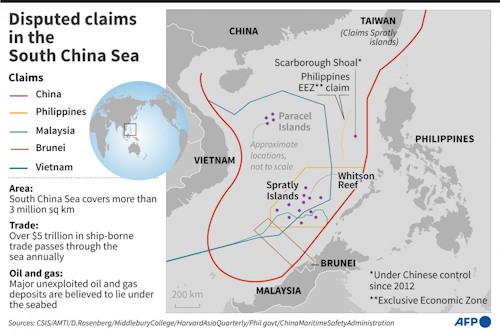
However, China still dominated in dredging and creating artificial islands, according to U.S. think tank, Asia Maritime Transparency Initiative, or AMTI. Since June 2024, Vietnam created 641 acres (260 hectares) of new land, bringing the total to just over 3,300 acres (1,335 hectares), nearly three quarters of China’s total. It also built eight new harbors.
5. NATO Retracts Comment On Death Of 4 U.S. Soldiers In Lithuania - D.W.
NATO Secretary-General Mark Rutte had said on Wednesday that the four soldiers were "killed in an incident in Lithuania." However, NATO later said that the U.S. military had not confirmed any deaths.
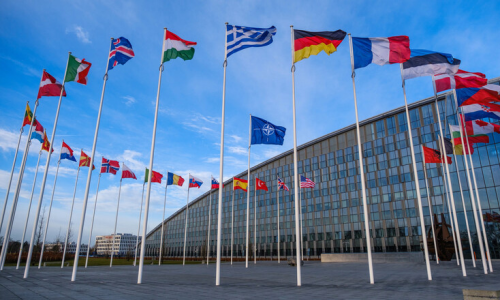
"The search is ongoing," NATO said in a statement posted on X. "We regret any confusion about remarks [Rutte] delivered on this today. He was referring to emerging news reports & was not confirming the fate of the missing, which is still unknown."
6. Iran Shows Off Military Might In Footage Of 'Underground Missile City' - RFE/RL
Iran has released a video showing a massive underground missile facility filled with a cache of high-powered weaponry.

The footage, shared by Iranian state media, showed Iranian Armed Forces Chief of Staff General Mohammad Baqeri and Amir Ali Hajizadeh, the Islamic Revolutionary Guards Corps Aerospace Force commander, showing off what Iranian media said was an "underground missile city." Some of Iran’s most advanced weapons are seen mounted on vehicles parked in the underground tunnels.
7. Iran ‘Ready’ For Indirect Talks With U.S., Khamenei Advisor Says - Al Arabiya
Tehran “is ready for indirect negotiations in order to assess the other side, present its own conditions, and make a suitable decision,” Kamal Kharrazi - an advisor to Iran’s Supreme Leader Ali Khamenei - was quoted as saying by the state-affiliated Tasnim news agency.
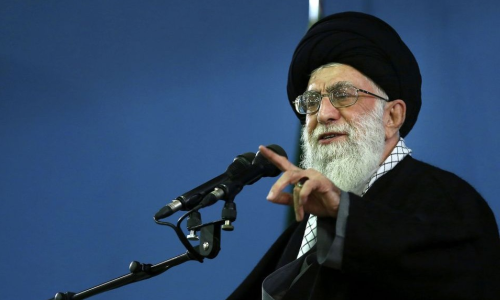
Khamenei, who has the final say on all state matters in Iran, has dismissed Trump’s letter, accusing him of trying to mislead global public opinion by portraying the U.S. as open to talks and Iran as the obstacle.
8. Kim Jong Un Oversees Tests Of AI Suicide Drones - D.W.
In the latest display of North Korea's growing military capabilities, Kim Jong Un oversaw tests of AI-enabled suicide drones and reconnaissance drones, state media KCNA reported.
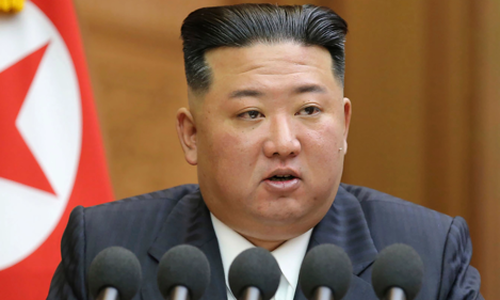
According to the report, Kim inspected upgraded reconnaissance drones capable of tracking targets on land and sea, as well as newly unveiled airborne early-warning (AEW) aircraft, as the North augments its existing land-based radar systems.
9. U.S. Marks 50th Anniversary Of Biological Weapons Convention - UPI
The U.S. State Department commemorated the 50th anniversary of the Biological Weapons Convention, an agreement implemented in 1975 to stop the development and use of biological and toxin weapons.
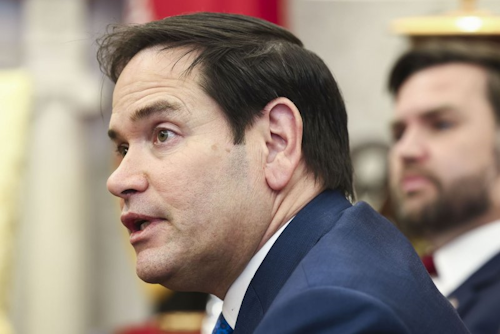
"The United States remains firmly committed to the BWC and the international norm against use of biological weapons," Secretary of State Marco Rubio said in a statement. "We unilaterally renounced biological weapons in 1969, before the BWC was negotiated, and over the past 50 years, we have remained a steadfast leader in and supporter of the BWC."
10. World Bank, South Africa Have $3 Billion City Rescue Plan - Bloomberg
South Africa, with the help of the World Bank, has a $3 billion plan to reverse the decline in services and infrastructure in eight of its biggest cities.

It will use a $1 billion loan from the World Bank, coupled with $2 billion of government money, to finance grants for cities including Johannesburg, Durban and Cape Town that meet targets in providing water, sanitation, electricity and solid-waste processing under a new government program.
11. The Sane Person’s Guide To Crypto Investing - Fortune
There have always been plenty of reasons for prudent investors to steer clear of the crypto markets. But is there a rational way to get exposure to the upside without losing one’s shirt to the inescapable volatility?

“What I suggest is a blue-chip strategy,” says David Pakman, a partner at the venture capital firm CoinFund. “What I would tell people is to create a portfolio of 60% Bitcoin, 10% or 15% Ethereum, and then put the rest in four or five other blue chips like Solana, Uniswap, Aave, or Compound.”
To understand how a crypto asset might count as a blue chip, it’s helpful to understand that every blockchain—like every company—comes with a narrative that explains why it is valuable and will likely remain so.
12. Colon Cancer Linked To Higher Risk Of Heart-Related Death - HealthDay Reporter
Colon cancer is a particularly deadly form of the disease, the second most common cause of cancer deaths in the U.S.

But patients diagnosed with colon cancer also need to be concerned about their heart health, especially if they're younger adults, a new study says. Colon cancer patients under 50 are 2.4 times more likely to die from heart disease within the first two years of their cancer diagnosis, according to findings scheduled for presentation in Chicago at a meeting of the American College of Cardiology. The increased risk of heart-related death runs highest within two years of their diagnosis, results show.









